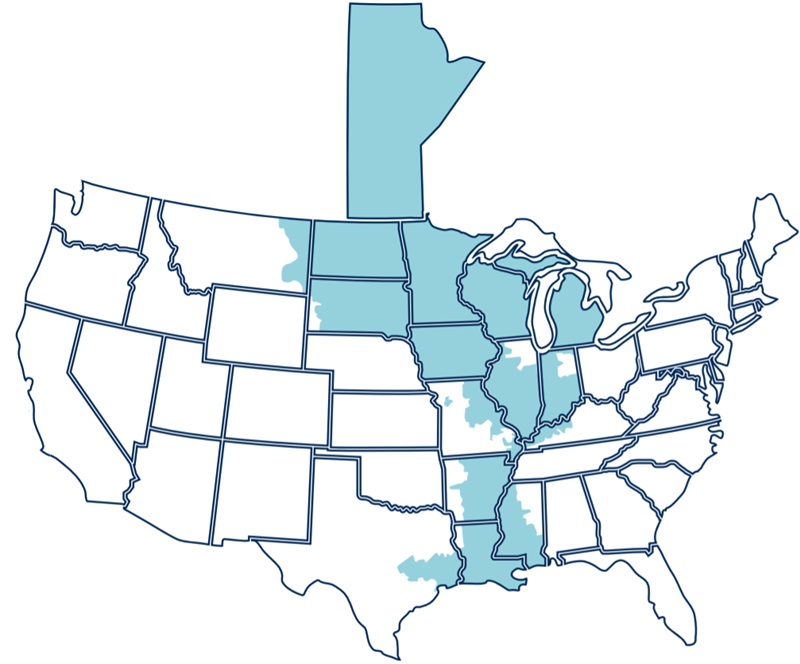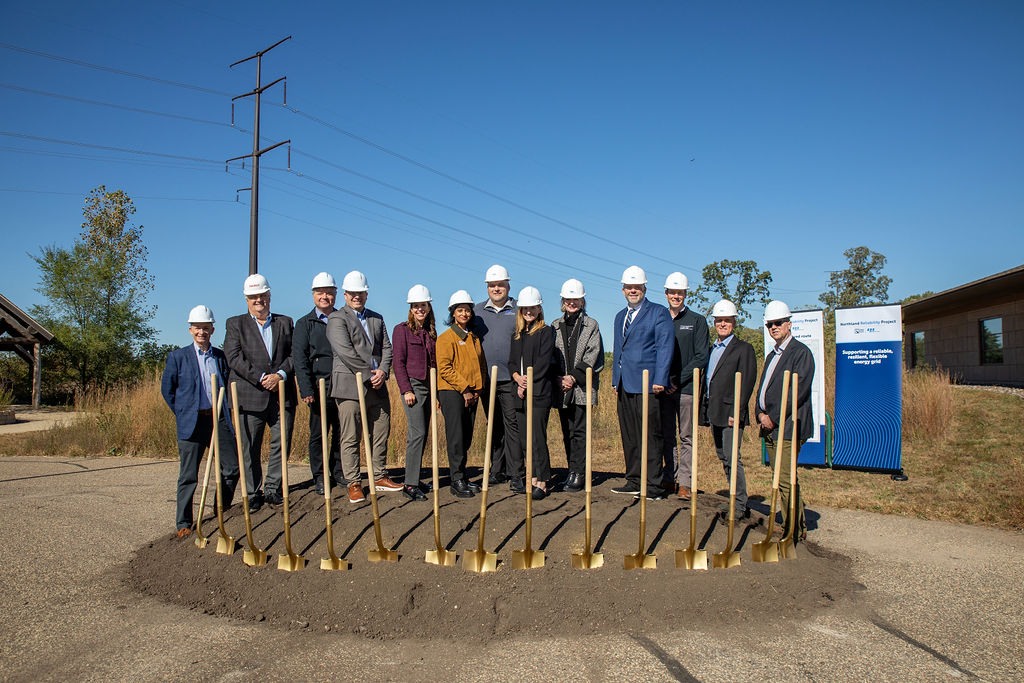According to the Midwest grid operator, MISO, the region has sufficient resources to meet electricity needs in the year ahead.
MISO recently released the results of its 2025 planning resource auction, which supplied more capacity than needed throughout its footprint for the upcoming planning year, while signaling a tightening supply-demand balance in the market during the peak summer months.
MISO members like Great River Energy routinely plan to have enough electric generating capacity to cover their customers’ and members’ load requirements plus additional reserves. Anything above and beyond can be sold to other utilities or offered into the annual auction.
“Great River Energy has sufficient capacity to serve our member-owners and we had surplus to offer into the auction for every season,” said Greg Padden, Great River Energy’s director of power supply and markets. “Our portfolio of diversified power supply resources and members’ demand response assets are well positioned in the capacity market.”

This is the first year MISO utilized a Reliability-Based Demand Curve (RBDC), which introduces a reliability-focused pricing structure to provide higher value for accredited capacity, especially when the system approaches minimum resource adequacy targets.
“MISO’s market reforms continue to assist in providing pricing signals that improve market efficiency and enhance reliability across the footprint,” said Aubrey Johnson, MISO’s vice president of system planning and competitive transmission. “We developed the RBDC through extensive collaboration with the organization of MISO states, our stakeholders and our Independent Market Monitor to ensure this proactive approach helps meet future needs of our evolving fleet.”
Summer readiness assessment released
In addition to the auction results, MISO also released its summer readiness assessment outlining the forecasted demand, generation capacity and weather expectations for the upcoming summer season. Much like the auction results, the summer forecast predicts sufficient, albeit tightening, reserves with nearly 138 gigawatts (GW) of available generation expected to meet the summer demand peak of 123 GW.
MISO’s summer assessment also pointed out several risk factors including the potential of extreme weather, and a decline in accredited capacity.
“Part of our value proposition is maximizing existing resources to maintain reliability across a large, diverse region. At some point we find ourselves in need of every available resource to keep the power flowing across our footprint almost every summer. The continued reduction in accredited capacity makes it much more challenging, especially during heat waves, hurricanes or other extreme weather events.”
— Jessica Lucas, MISO’s executive director of system operations
With a diverse energy portfolio consisting of peaking plants and renewable resources, Great River Energy is well positioned to meet the energy demands of its member-owners for this summer season, but with an eye toward the future, it is also looking to add more capacity resources as demand for electricity grows.
Great River Energy is also utilizing its robust demand response program in partnership with member-owners to support grid reliability and reduce load during peak conditions. A demand response program helps utilities balance supply and demand by shifting electric demand to other times, with cycled air conditioning and interruptible water heating being prime examples.
“As intermittent renewable resources provide more energy to the grid, new dispatchable resources will be needed to ensure reliability,” Padden said. “Demand response programs are an important part of our capacity portfolio and the flexibility they afford during periods of high market prices helps to reduce costs for Great River Energy and our member-owners.”
Looking forward, the alignment of energy strategies will remain essential to balancing reliability, economic efficiency and sustainability, ensuring the region is prepared for the challenges and opportunities of the next several decades.
 " data-object-fit="cover">
" data-object-fit="cover">